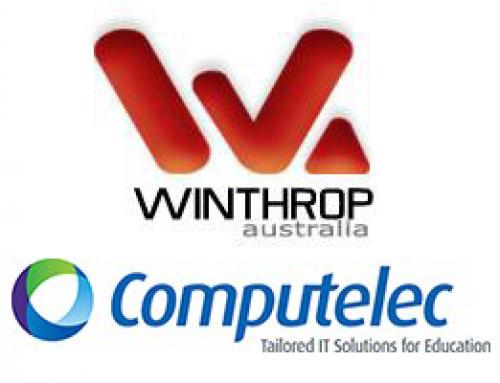Diving into the Toybox of Microsoft’s Office365 and Google Apps for Education (part 2)
by Joh Wilkins Bennett, Professional Development and Innovation Specialist at Expanding Learning Horizons.
My previous post outlined a few of the drivers behind the use of technology in our current classroom practises. Discussed were three very different sources of research, that begin to establish the skill set desired for success in and beyond our current schooling. But it’s all great in theory… we know this. So…… what are the practical implementations that can occur to support three of the prescribed overlapping drivers in a 21st Century skill set, and how can I use Office 365 and Google Apps for education to become the tooling for Virtual Collaboration, New Media Literacy and Social Intelligence?
Again as with the overlap and convergence of definition, what do these terms mean in this context? In short:
- Virtual Collaboration is the ability to work productively, drive engagement, and demonstrate presence as a member of a virtual team.
- New Media Literacy is the ability to assess and develop content that uses new media forms, and to leverage this media for persuasive communication, and
- Social Intelligence is the ability to connect to others in a deep and direct way, to sense and stimulate reactions and desired interactions.
Virtual Collaboration
There are numerous tools in the O365 and GAFE suites that can support a student’s ability to virtually collaborate. Whether we see the student in the role of the engagement driver, or in the role of a support collaborator. Two of the most appropriate tools in each suite are GAFE’S Blogger and Collaborative OneNote notebooks powered by O365.
Blogger
Blog is short for Web Log and in essence is a form of online journal. An ad-in to the GAFE Suite, Blogger, is a basic WYSIWYG editor, where creation and refinement of setup, aesthetics and content are controlled through the Blogger Dashboard. You choose and customise a particular template, edit your layout and adjust the settings including privacy to suit your needs. The ability to customise these aspects allow us as educators to monitor and support "redesign" students work before live upload.
According to a National Literacy Trust report from the UK, Heathfield Primary School increased the quantity and quality of the writing of their primary students by using class blogs as a vehicle for their writing to an authentic audience. The structure of daily entries developed within the class cohorts a number of students as habitual writers. Their Level 5 writing scores improved from 12% to 63% that year, and this achievement has been maintained.
This learning is not just due to the students writing on the class blog, rather the additional elements of authenticity of audience and quality commenting and feedback easily sort through the structure of the blog accelerated the learning and allowed for true collaboration, beyond their students actual classroom.
An example of this can be seen in a blog post written by a grade 5 student. Her blog having comments enabled, saw the student access the functionality of the tool to receive 11 comments to her original post. The process of virtual collaboration is not just in the accessing of a virtual audience – one way, but rather the notion that the student holistically partook in the virtual collaboration aspects allowed to her by the tool and gained self-regulation and feedback from her audience in return. She wrote a second post addressing the questions she received as feedback from her original post and again received another three comments on this follow-up. This saw the expansion and depth to which virtual exchanges were occurring. The quality of the comments she received, allowed her to expand and refine her original ideas and thoughts in a positive way, which has ultimately lead to new learning for this student.
OneNote
OneNote is part of the 0365 package. This is an additional piece of software to the word processing, spreadsheet or presentation tooling. OneNote is unique in that it encompasses all of those software abilities and then some further of its own. When we think about other aspects of virtual collaboration than those addressed by Blogger, we think about technologies that make it easier to work, share ideas and be productive despite physical separation. Members of virtual teams need to develop skills in being able to adapt to environmental changes, and to support the development of communities that promote productivity, wellbeing and sociability. OneNote and in particular the Class Notebook Creator, starts to bring these elements into play in one place.
OneNote is the virtual equivalent to an endless piece of paper, a large expanse of blank wall where drawing, writing and embedment can take place at any spot of the users choosing. As the creator of content, or producer of knowledge or co collaborator or virtual team member, you can add absolutely any media, anywhere on the page, in real time and have your co collaborators access that relatively instantly.
While the authenticity of accessing global audiences differs to that of GAFE’S Blogger, the elements of virtualisation of a collaborative team become exponential. As an educator in a classroom, I can create a locked repository of theory, notes, worksheets resources required for the topic being taught. Behind that chapter in my virtual book I can assign personalised notebooks, as a section to each of my students that can be seen by them and the educator only. I can add in an open collaboration space that my students can access to work together on in real time that can be viewed and added to by anyone in this class notebook structure. Then I can send out read only links to the whole or partial areas of our class notebook to authentic audiences- parents, other educators, accreditation bodies, any arena required.
When we look deeply at the interactions of Virtual Collaboration key drivers, we can start to see the elements of: working productively, driven engagement and virtual presence in each tool.
In short OneNote- application, and OneNote online powered through 0365 offers educators and students:
- Interactivity in real time
- Collaborative notebooks
- The support of inking and pen technology
- Unlimited storage as an element of the 0365 suite
- The ability to be accessed across all devices, anywhere, anytime
- The ideation of “smart paper” with the additional ability to embed multimedia
While Blogger offers the following strengths:
- Multiple authorship
- An authentic platform to global audience
- The ability to embed multimedia and objects in a WYSIWYG format
- Moderation of comments and content for educators
- The ability to be accessed across all devices, anywhere, anytime
As with the use of all tooling, it comes down to just that- what is the focus of the teaching and learning it is there to support, what direction do I want my learners to focus on, and how does this tool not only support my intended pedagogical approach, but what scope does it further give my learners to explore.
This has been Part 2 of a series of posts exploring Office 365 and Google Apps for Education. Stay tuned for the remaining posts, or watch our recent Webinar on the topic. If you are located in Sydney or Brisbane and would like to attend our Office 365 or GAFE workshops in November, please visit our events page to register.
Note: Monika will be running an online Office 365 course across 3 afternoons from Wednesday 4th - Wednesday 18th November, details here.





